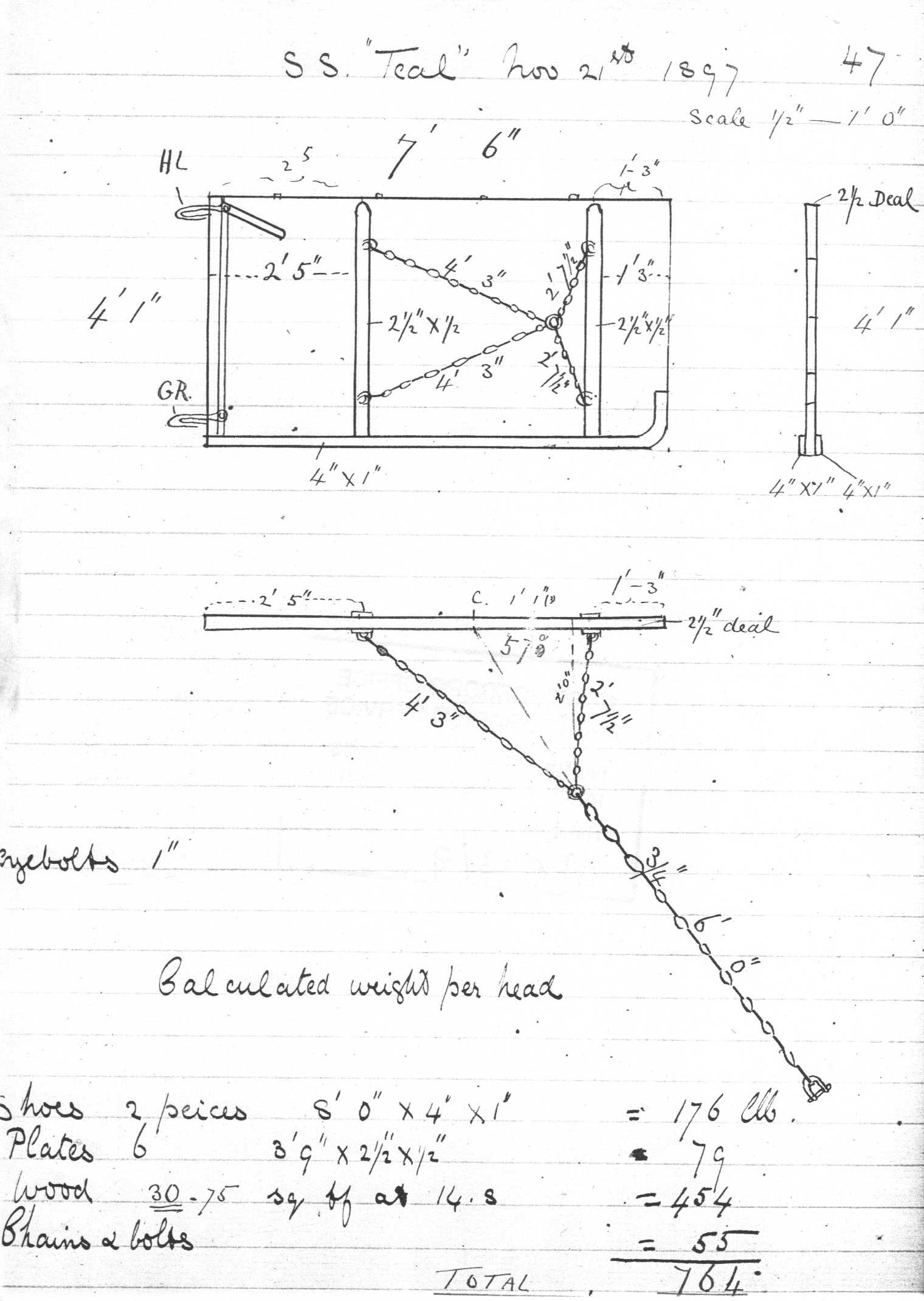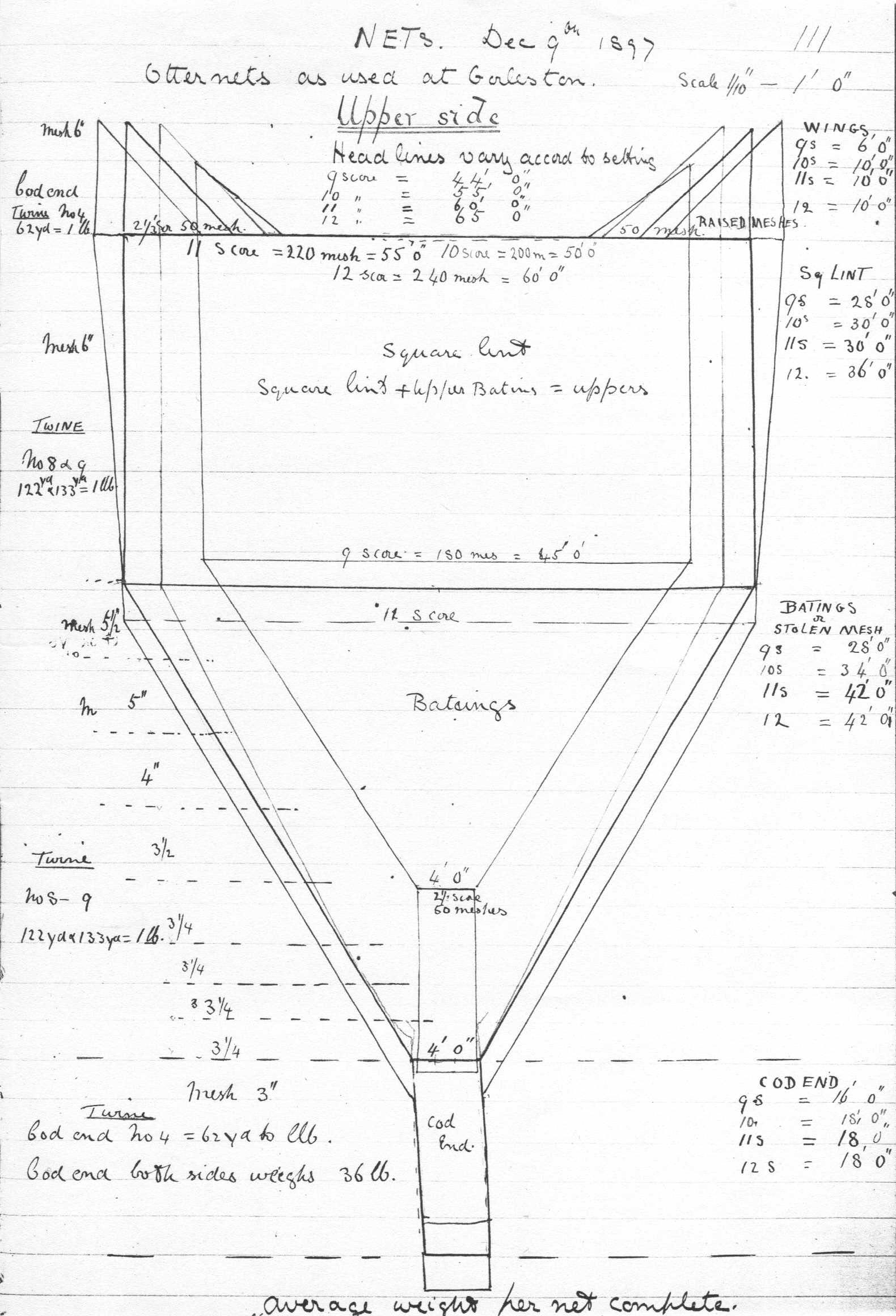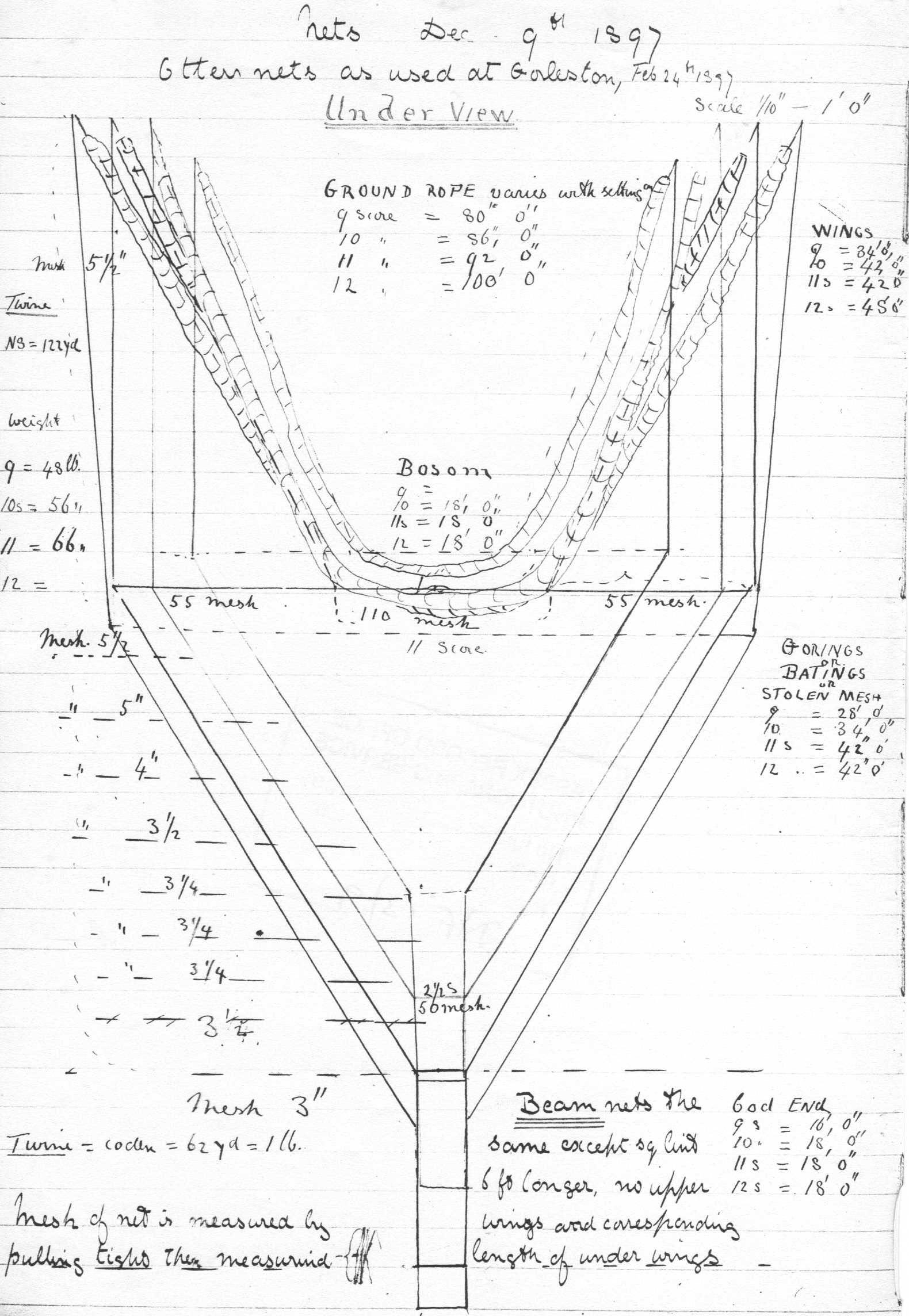During the late 1890’s trawlermen, including Robert Muirhead Hewett, started experimenting with otter trawls. Steam trawlers could maintain a constant speed and thus there was no danger of the trawl collapsing due to loss of speed. It was shown that the mouth of the trawl could be held open by attaching an angled board to each side of the trawl. Properly known as otter boards, they soon became known as “doors” as they were about the size of a door. Beam trawls are restricted in size by the length of the beam (too long and they break) but these new otter trawls were not restricted in size. They were soon proven to be more efficient than beam trawls when fishing for round fish.
Initially the trawl boards were attached to the edge of the nets. In the above drawing you see the abbreviations HL for headline and GR for groundrope where they attached to the board.
In time it was found that the width of the trawl could be very effectively increased by attaching bridles between the otter boards and the net – this took a bit of setting up but greatly increased the area of seabed swept.
Somewhat surprisingly the otter trawl evolved little from it’s initial form until the 1960’s when synthetic twine replaced natural twine and the 1970’s when side panels were added to give extra headline height. The midwater trawl also appeared in the 1970’s. In the late 1900’s the twin rig trawl whereby two trawls are towed side by side.


